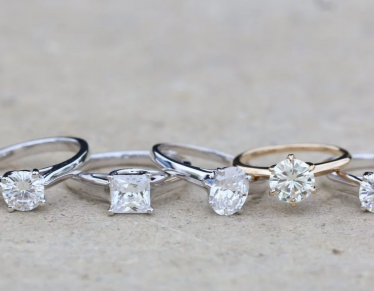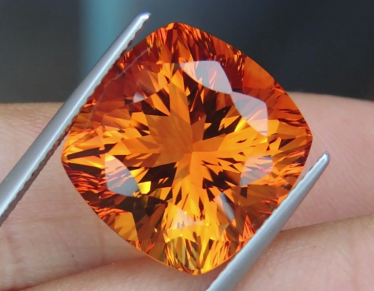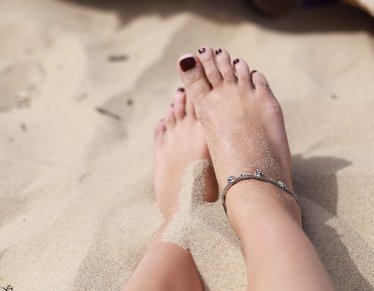People have been wearing jewelry for almost as long as there have been people on this earth. The Oxford Living Dictionary defines the word jewelry as “personal ornaments, such as necklaces, rings or bracelets, that are typically made from or contain jewels and precious metal.” The earliest known example of jewelry was found in Israel, at a site called Skhul. The archeologists found beads made from shells, with holes in them. They could be strung together as a necklace, or work as a pendant. The amazing thing is that these beads are 100,000 years old. So since earliest history, there was a major debate on precious vs semi precious stones.
Wearing jewelry is part of the human social interaction, albeit a silent interaction. A person’s status can, in part, be determined by the type of jewelry s/he is wearing. Well after the beads discovered at Skhul were used as adornment, the wealthy and the powerful underscored their positions by wearing jewelry that was jaw-dropping in its use of gold, silver, and stones. The funerary pieces found in King Tutankhamon’s final resting place immediately come to mind – especially his gold mask.
Jewelry stones are…what?
Now let’s take a look at the stones used in personal adornment. Overall, gems are divided between precious and semi-precious. Technically speaking, there are four stones designated as “precious” – diamond, ruby, emerald, and sapphire. Semi-precious stones are a far larger category. The whole division between precious and semi-precious came into common parlance in the mid-19th century. The underlying implication of these terms is that one type of stone is more valuable than the other.
That’s simply not true. There are semi-precious stones that are far more rare and expensive than any of the precious stones. The crowning glory of the precious category – diamonds – are actually far more plentiful than many other stones.
So let’s go back to the basics, and take a look at the wonderful stones found in everything from rings and necklaces to crowns and tiaras.
The Precious Stones
The first stones we’ll take a look at are those qualified as precious stones. Every precious stone is a mineral. The only possible exception is the pearl, which is organic. Pearls have been listed both as precious and semi-precious.
Diamond
Whenever people think of precious stones, the one that first comes to mind for contemporary people is the diamond. Initially, diamonds were mined only in India, from approximately 400 BC to 1400AD. In 1725, they were discovered in Brazil. The biggest cache, though, was found in South Africa in the 1870s.
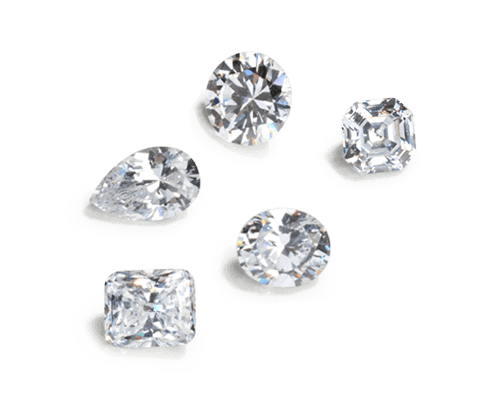
Diamonds are a solid form of carbon, with what’s known as a diamond cubic crystal structure. When you look at a rough diamond, you’ll see octahedral shapes (think octagon, which is eight-sided) and a tremendous luster on the flat surfaces. They were “made” approximately 3 billion years ago. Quite a few people believe that diamonds are created when coal is extremely compressed. Diamonds and coal are not related. Coal actually is made from plant materials that have been super-compressed.
What this super-compressed carbon gem does is refract light. That means when a ray of light enters the stone, that ray will change direction. That’s why Buddhist monks favored diamonds because they believed the stones, when worn as a talisman, would ward off evil. In the Middle Ages, people believed that diamonds had medicinal properties. That belief fell out of favor, but the diamond engagement ring is an idea which people have treasured for years.
The Romans introduced the concept of commitment between two people as evidenced in their use of betrothal rings. But the specific use of diamonds in engagement rings can be traced back to 1477. Mary of Burgundy received a diamond engagement ring from Archduke Maximilian of Austria. At that time, diamonds were rare, and wearing them was limited to royalty and the elite upper class. Nowadays, diamonds are the birthstone for the month of April.
Ruby
Rubies are made from the mineral corundum, and corundum is made from densely packed aluminum and oxygen atoms. Under the earth’s crust, these minerals are subjected to extreme heat and pressure. In this pressure cooker, some of the aluminum atoms are replaced by chromium atoms, which is how a ruby gets its red color. Compared to diamonds, rubies are latecomers to the gem world, as they were formed a mere 50 million years ago.
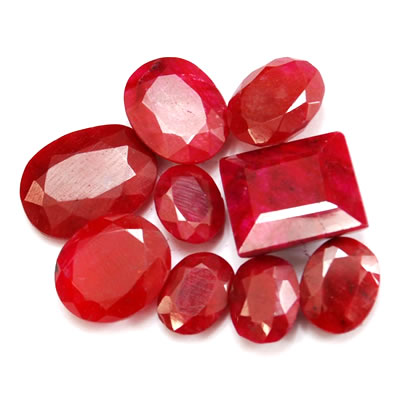
The color red is most commonly associated with intense emotions, from passion to fury. In India, the ruby was called ratnaraj, which means “king of precious stones.” Some ancient people saw the stone as life, because it was the same color as blood.
Warriors would either wear them as talismans or embed them in their skin to make them invincible. Believe it or not, rubies are mentioned four different times in the Bible and are associated with beauty and wisdom. Rubies are a major export from Thailand, and can also be found in Madagascar, India and Sri Lanka. But the greatest source for large quality rubies is Myanmar, which was once called Burma. When a stone is referred to as a “Burmese Ruby” is an indication of a superb quality gem.
Besides Dorothy’s ruby slippers from The Wizard of Oz, there are some famous rubies. The biggest missing ruby is the Liberty Bell, which was found in East Africa in the 1950s. It weighs in at four pounds, which translates into 8,500 carats. The ruby was carved into a miniature of the Liberty Bell and includes 50 diamonds set into it.
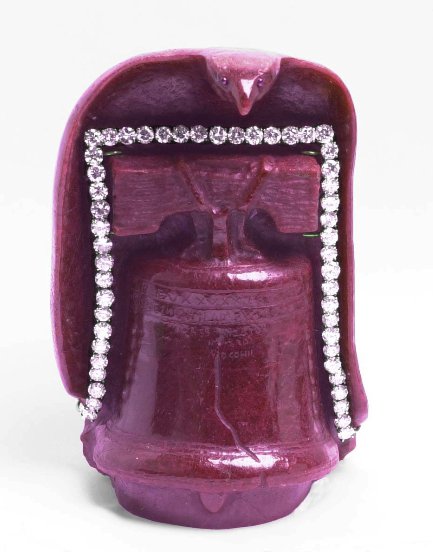
The piece was stolen from the Stuart Kingston Jewelers in 2011 and has never been recovered. The Sunrise Ruby holds the title as the world’s most expensive piece of corundum. It’s a certified, untreated, 25.59-carat Burma ruby, with the highly prized, pigeon blood red color saturating the stone. When putting together with high clarity, brilliance, and a well-proportioned cut and shape, it’s not surprising that this ring fetched 30 million dollars at a Sotheby auction in Geneva. Rubies are the birthstone for the month of July.
Emerald
Emeralds are beryl minerals, which get their color from trace amounts of chromium and sometimes vanadium. They are a relatively fragile stone, especially when they’re compared to diamonds and rubies. The color should be a vibrant green. Those that are paler greens are simply called green beryls. Emeralds often have surface fissures which can break, so they are treated with oil. Cedar oil is the one most frequently used to fill in the surface cracks. But fragile or not, emeralds are part of the gemology of the ancient world.
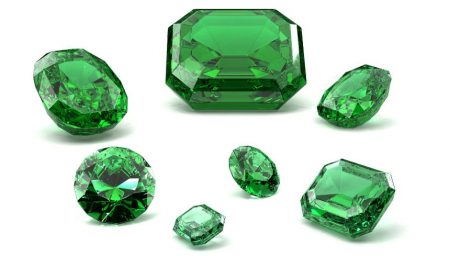
There were mines in Egypt, India, and Austria, but now those mining sites are in ruins. The discovery of the profusion of emeralds in Columbia brought other countries’ emerald mining to a standstill. Over the years, emerald deposits have been found in many countries, from the United States to Zimbabwe. Emeralds are May’s birthstone, and also the gem to give as a gift for people celebrating their 20th, 35th and 55th anniversaries in the US.
As far as age is concerned, emeralds are older than rubies, but not quite as old as diamonds. They were made approximately 2.7 billion years ago. The two possible formation types are hydrothermal veins or pegmatite deposits. What’s the difference? Hydrothermal veins are made by hot water, and pegmatite deposits are made with magma, which is a molten rock.
Emeralds have been popular for a long time. The first known emerald mines were in Egypt around 1500 B.C. Cleopatra adored emeralds, and her love for them is well-documented. Long before the Spanish traveled to South America, Incas used emeralds in personal adornment pieces.
The discovery of emeralds by the Spanish in the 16th century opened the trade door even wider, as they traded the green gems for precious metals throughout Europe and Asia. In the mystical realm, it was believed that placing an emerald under one’s tongue helped that person to see into the future. They were also believed to bolster intuition and guard against memory loss. Their soft, soothing green color is still considered an antidote to eye strain.
Sapphire
Sapphires are essentially kissing cousins to rubies, as both are created from the mineral corundum. Colors happen when corundum comes into contact with other minerals during its formation. While the crystal lattice of sapphire is forming, a wide array of other minerals can fuse with that lattice, each ending up creating a different color. The ever-popular blue sapphire is corundum mixing with titanium. Mixing with the iron causes a yellow stone. Just like diamonds, there are many shades in the sapphire world, including orange, pink, yellow and, of course, blue. There’s an extremely rare color of sapphire known as padparadscha (Sanskrit for lotus flower), which is a pinkish-orange shade.
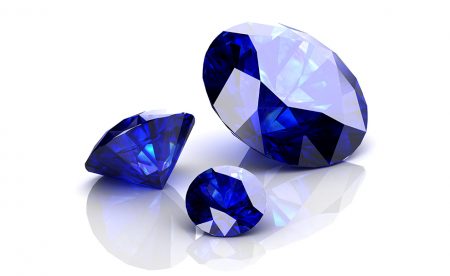
These gems can be found in a number of places in the world, including the United States, Australia, Madagascar, Sri Lanka, and Malawi. They certainly have been worn by royalty, and the term “royal blue” might have simply been a reflection of the intense blue color of the stones. Mystical attributes of sapphires range from saving a king from his enemies to the preservation of one’s virtue, and the symbolism of faithfulness and nobility. The attributes of sapphires are virtue, wisdom, holiness and good fortune.
There have been some very famous sapphires. One of the best-known in contemporary society is the engagement ring Prince Charles gave to Lady Diana – an 18-carat oval blue sapphire surrounded by diamonds. The ring is now worn by Princess Catherine. Sapphires used as engagement rings were very popular in the Victorian era, as jewelry crafters surrounded sapphires with smaller diamonds to evoke floral designs. The largest and probably best-known is the Star of India. Star sapphires and star rubies have a quality called asterism.

It’s an optical effect – there’s an enhanced reflective area within the stone that has five arms – the shape of a star. At over 563 carats, this massive jewel was presented to the New York Museum of Natural History by financier J.P. Morgan in 1900. But let’s not forget a sapphire that has been seen by millions: the 104-carat Stuart Sapphire set in the Imperial Crown of England.
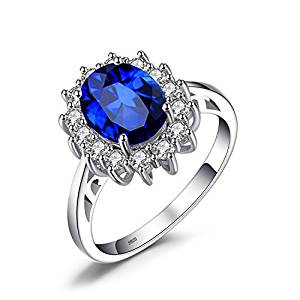
That’s the shortlist of gems considered precious. The gems categorized as semi-precious is much bigger. Each has its myths and legends, each one is a beauty.
Semi-Precious Gems: They Stretch from A to Z
In his book Gemstones of the World, leading gem researcher and expert Walter Schumann states that there are about 200 natural jewel types. Stating that semi-precious gems stretch from A to Z is literal. The first gem is afghanite, and the final one is zircon. If the precious stones number four, that means semi-precious stones is the far larger category with 196 different types.
Some are exceedingly rare, and some are far more expensive per carat than precious gems. The focus will be on two gems that had been considered both precious and semi-precious: the pearl and the amethyst. Beyond that, the emphasis will be on the most popular semi-precious stones used in jewelry that are affordable, plus one expensive semi-precious gem.
The Pearl
The first “semi-precious” gem that needs to be looked at is the pearl. Over time, pearls have been included and excluded from the precious gem category. Pearls are extremely interesting because they are not just minerals. They have a mineral component – aragonite, which is also called calcium carbonate – but they also have an organic component – conchiolin, which is a protein. Pearls happen when some type of irritant enters the oyster, mussel or clam. That irritant – which is often a parasite – is coated by a substance called nacre. One nacre layer after another is deposited on the irritated area as a defense mechanism.
The result is a pearl. There are both saltwater and freshwater pearls, and within those broad categories, there are three sub-categories: natural, cultured and imitation. The difference between natural and cultured pearls is that cultured pearls have an irritant surgically implanted. Either way, it can take a very long time to develop quality pearls. About 3 years of development is needed before the pearls can be harvested.
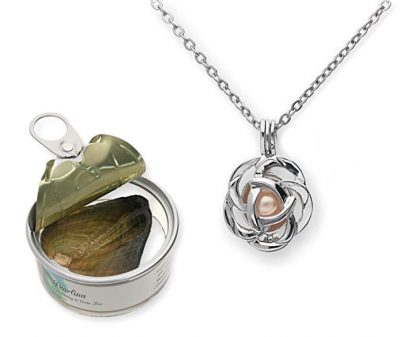
Pearls come in an astonishing array of colors. The best-known are white, cream white, pink, blue, green, purple and black. As with virtually every gem, these gifts from the waters have myths and legends. Both Hindus and Christians see the pearl as a symbol of purity. Ancient Greeks believed that the gems were the tears of the gods and goddesses. In early Chinese history, there was a belief that black pearls symbolized wisdom, and grew inside a dragon’s head. When the pearl was fully formed, the dragon would then carry it with its teeth.
Imitation pearls aren’t going to be discussed. They might be perfect, but they’re not real.
Amethyst
The amethyst was considered a precious stone until the 19th century. That’s when the massive deposits of this gem were discovered in Brazil. Scarcity adds to value, but plenty decreases the value. Nonetheless, amethysts are beautiful to wear with other stones or alone. This gem is a purple variety of quartz. Quartz without impurities is white, but with impurities is transformed into colored jewels such as amethyst, citrine and onyx.
Amethyst is actually found in the interior of geodes. Geodes are formed like bubbles around the gas cavities in lava. Liquids, which have a trace amount of iron, then seep into the geode, and amethysts are born. The colors can range from pale to very dark purple. It’s the dark shades that command the biggest prices.

Legend has it that amethysts can both stimulate and soothe the mind. But its greatest attribute is the ability to prevent drunkenness or overindulgence. That was one of its qualities, according to ancient Greeks. Other talismanic powers include controlling evil thoughts, keeping travelers safe from surprise attacks and aiding soldiers to triumph over their enemies.
Probably the most famous amethyst jewelry is the amethyst and turquoise bib necklace created by Cartier for the Duchess of Windsor in 1947.

So what semi-precious stones are both the most popular and the most affordable?
You Can Buy It!
Topping the list of affordable and popular gemstones is the amethyst. It appears in every form of jewelry from earrings to necklaces. On the list of the eight most popular and affordable gems, it ranks third. One fact that many of the popular semi-precious gems share is that quite a number are part of the quartz family. If you want to test the waters of developing a collection to suit any mood or event, start your jewelry collection with any one of these gems. Creating a collection is all about what makes a person happy.
Tiger’s Eye
Most people know about this very common and plentiful gem. It might be easy to find, but its color and luster are spectacular. The brownstone is banded with different shades of yellow. The name is derived from its similarity to tiger and cat eyes.
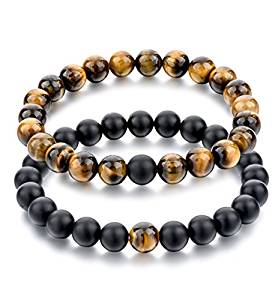
It’s believed to aid a person dealing with anxiety or fright, and by imparting a calming influence, will impel the person to action. Because supplies of this gem are so plentiful, it is usually only a few dollars per carat.
Rose Quartz
Rose Quartz is a pale pink cousin to an amethyst. It has been called the Heart Stone, as it’s believed to represent and aid individuals in the matters of love. Its earliest use as a token of love is reputed to have occurred around 600 BC. The best examples of this gem tend to be larger, and small versions don’t have the soft, pale pink tones.

Rose quartz use is not limited to jewelry. Artists have made small sculptures from this gem, often of a whimsical nature. Top-quality rose quartz is mined in Brazil.
Agate
In discussing agate, you have to start with chalcedony. Chalcedony is non-banded. Agate, like tiger’s eye, is a banded stone. It’s finely-grained quartz of a microcrystalline variety – yet another member of the quartz family. The colors agates come in are almost limitless, and include blue, red, white, black, green and purple. Agate’s been used to heal as well as to wear.

It’s said to provide an influence of stabilizing and strengthening a person. Sometimes a particular designation is given to a specific color or pattern, such as the rare fire agate, which is only found in the southwestern United States and Mexico. One fact does stand out about agate – like snowflakes, no two stones are alike.
Citrine
Citrine is the bold yellow cousin to amethyst and rose quartz. One look at the gem lets someone know that it contains the vibrancy, power, and warmth of the sun. Much of the citrine currently being sold is from Brazil, but is usually heat-treated amethyst. Natural citrine is found in Russia, France, and Madagascar. Most gems are believed to have healing powers, and citrine is no exception.
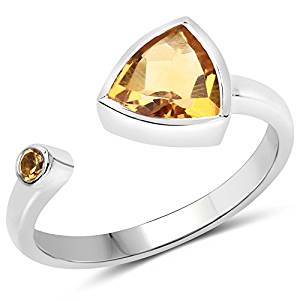
This gem is said to encourage new beginnings and new pursuits. It doesn’t hold negative energy and simply transforms it into positive energy.
Jasper
Jasper is called an aggregate stone because it can contain chalcedony, quartz, and other minerals. The most common form of Jasper is red, which comes from the iron content in the stone. Other colors are green, blue, purple and yellow. Jasper is found in many countries, from India to Indonesia, the United States to Australia.
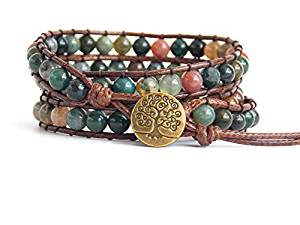
This is a gem similar to agate, in that it boosts physical strength and energy. It is considered a repository of courage and wisdom. While both Jasper and agate have many colors, the way to tell the difference is to hold it up to the light. If you can see through the stone, it’s agate. Jasper, on the other hand, is opaque.
Onyx
Onyx is another banded chalcedony like agate, but the banding is different. Agate has curved bands, and the bands of onyx are parallel. Underneath it all, both are quartz minerals. Most people associate onyx with the color black, but it actually comes in whites, grays, and blacks. Black is the most popular color. Onyx is another gem that can be found throughout the world. In metaphysical terms, a black onyx is a stone of protection. Any evil energy sent towards it will be absorbed and transmuted within the body of the stone.

It’s good for causing relief from sorrow or grief. In earlier ancient times, Romans used onyx seal – the pattern was carved in the negative, would then be stamped in liquid wax, which revealed the positive image of the seal. Seals were used to keep important papers from prying eyes.
Turquoise
Is there anyone in the contemporary world that isn’t familiar with turquoise? Probably not. The beautiful opaque gem Where there are dry climates, like those in the southwestern United States, China, and Tibet. However, each environment puts its stamp on the stone, so the color reveals where a particular piece of turquoise comes from. Many cultures believe that this gem is sacred, including ancient Egyptians, Persians, South American native tribes and the Native Americans of the Southwest, most notably Hopi, Zuni, and Navajo.
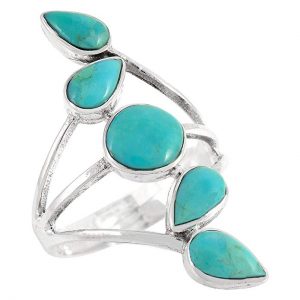
It is considered a gem of well-being, with protective properties that ward off negative energy. The color range goes from blue to yellowish-green. As with most opaque stones, this jewel is not faceted, whether it’s set in a ring or used as a bead. Instead, it appears as a cabochon, which means it’s simply polished. Americans associate turquoise with sterling silver settings, but its use with gold is a standard outside of the US.
Tanzanite
One of the rarest semi-precious stones used in jewelry is the tanzanite. All of the world’s tanzanite can be found in one locale: a site only four kilometers wide by two kilometers long, situated at the foot of Mount Kilimanjaro in northern Tanzania. The stone’s name was bestowed by Tiffany & Co. upon its introduction to the gem market in 1968. This gem is the blue through a bluish-purple variety of a mineral called zoisite. It does subtly shift colors, ranging from burgundy to violet.

Is it a metaphysical domain? Transformation and spiritual exploration. Tanzanite’s rarity affects its price. One carat is $300-425. A one-carat ruby of decent quality is $300. A one-carat emerald is $525. One carat is sapphire is $100-150. That’s how one of the rarest semi-precious gems stacks up against the precious jewels.
So What’s the Difference?
What is the difference? Mostly, the difference is non-existent. People made the delineations between the two sorts of gems and depending on where you look in history, what might now be considered a gem might well have been considered an unremarkable mineral. People in the jewelry market have been polled, and the overwhelming opinion of the precious versus semi-precious argument is that it simply doesn’t matter. What’s precious to one person could be thrown away by somebody else. What matters is how you feel about it.
Fortunately, the modest prices affixed to many semi-precious gems mean that one can own lovely jewelry without breaking the proverbial bank. So pick a stone – there were only 8 semi-precious choices mentioned in this article – and see if it works for you. It might be a moonstone or an opal. It could be garnet. Don’t dismiss amber until you’ve tried it on. And when you have, if it works…enjoy it, and wear it well.

